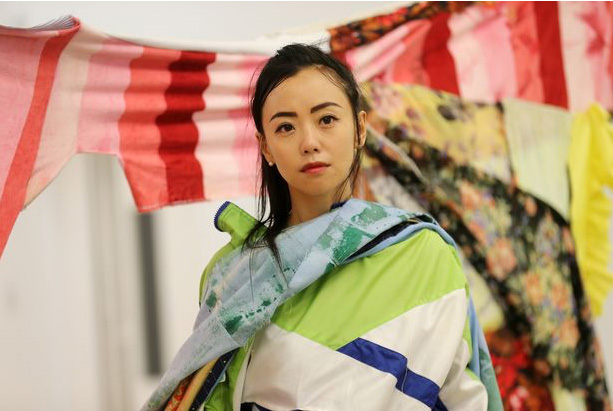JOSE DÁVILA was chosen by Portuguese artist Pedro Cabrita Reis who was an early exhibitor at Baltic in 2002.
Jose was born in Guadalajara, Mexico, in 1974 and still lives there. He is interested in architecture and the way objects occupy space. His Baltic exhibition, also on Level 4, consists of one piece called The Weaker has Conquered the Stronger. Comprising two metal girders, steel cables, sandstone boulders and a big red balloon, it looks like a giant’s executive toy. Everything is perfectly poised. The balloon floats just below a suspended boulder which looks as light as air. You wonder: is it real? The balloon made me think of Winnie the Pooh. Smiling, Jose suggested the 1950s French film, Le Ballon Rouge, in which a boy finds a red balloon.“I think ultimately art is an act of freedom and it can be playful,” he said.“The rock over the balloon weighs a tonne-and-a-half but you can’t be sure. I wanted to subvert the natural order of things.” Jose sourced the materials locally, the metal beams having been fabricated in the North East and the rocks, which he chose himself, coming from a quarry about 45 minutes away. He said he had been keen to reflect the area’s industrial past and its primitive geology. He agreed his creation could be described as a 3D visual puzzle.As for being selected for this show: “Fantastic. It’s an honour to be nominated by Pedro Cabrita Reis whose work I’ve always admired.”
TONI SCHMALE was chosen by Berlin-based Italian artist Monica Bonvicini who exhibited at Baltic recently.
Toni, who was born in Hamburg in 1980 and lives in Vienna, took an interesting route into art.“ I was a footballer in the German national team,” she said.“ I was playing in the German Bundesliga. This was before I started being an artist. I was always interested in art but I was playing all the time soccer. When I was 21 I went to art school.”Asked if she could score penalties, the one-time professional midfielder laughed.Her exhibition on Level 3 resembles a gym with wall-mounted pieces and others in black metal on the floor. They are works for the mind, though, rather than the muscles. Toni showed how the sculptures were assembled from small components. “I make everything in my metal workshop and also what is important for me is that I can carry everything myself.” According to Baltic, the machine-like quality of Toni’s workreflects “key ideas related to gender roles and hierarchies within society”. She said an influence was Playing and Reality, a book by British paediatrician and psychoanalyst Donald Winnicott which, published posthumously in 1971, highlighted the importance of play. As for the Baltic Artists’ Award, she said: “It’s great to be nominated by Monica Banvacini. She was my professor at art school in Vienna. This is a great chance to show at Baltic and I’m really happy.”
SHEN XIN was chosen by British artist Mike Nelson, twice nominated for the Turner Prize.
Shen was born in 1990 in Chengdu, China, but studied at the Slade School of Fine Art and is now based in London. “It has been very hard,” she said. “It’s a very high cost city.” You venture into the dark on Level 3 to see Shen’s four-screen video installation, Provocation of the Nightingale, which, according to Baltic, is underpined by her “investigation into systems of belief and power”. It takes 54 minutes to negotiate the space and view the four films, all of them displayed as if they were being screened in the big theatre where some of them were made using actors. As a general theme, the films look at how religions have been assimilated into various cultures such as Buddhism in Europe and South Korea and, most surprisingly, Islam in China where, said Shen, there are female imams and women-only mosques. Proof of the latter can be seen in the final film which comprises extraordinary footage found online.Shen also touches on the relatively new phenomenon of DNA testing, reflecting people’s responses to their discoveres as uploaded on YouTube. Positing this new fad as akin to a secular religion, she explained how people could be sucked in.“ You can try to find out where you come from and potentially what diseases you might carry.“ But once you submit to this system you don’t know what the company might do with that information.” Like the others, Shen was delighted to be showing at Baltic.“ For me it’s a great opportunity,” she said. “I’ve never been able to present a video installation on this scale.”
Baltic Artists’ Award is intended to take place every two years. This inaugural presentation runs until October 1. You can cast you vote on Baltic’s ground floor and join in a discussion on Level 2. Baltic opens Monday to Sunday, 10am to 6pm (Tuesday from 10.30am).




